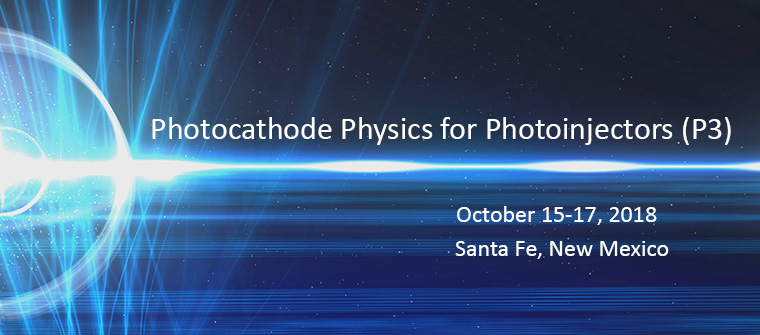Conveners
Session 10: Theory and Computation - continued
- Dimitre Dimitrov (Tech-X Corp.)
The state of the art in creating next-generation high-brightness electron beams requires that electrons emerge with mean transverse energy (MTE) of ~10 meV or lower. Identification of new, promising materials requires predictive understanding of the physics underlying photoemission. This talk will present our first-principles ab initio solid-state calculations of MTE for a variety of proposed...
Abstract
Obtaining high efficiency of polarized electron sources is a priority task, especially for the upcoming Electron-Ion Collider to be able to reach the luminosity needed to reach its physics goals [1].
In this presentation, we review several proposed methods and related simulations aimed at enhancing quantum efficiency (QE) of polarized GaAs photocathodes. Among recent significant...
Laser induced electron emission is important to the development of novel plasma and vacuum devices [1, 2],
compact electromagnetic radiation sources and accelerators, and time-resolved electron microscope. The rapid
development in nanotechnology and ultrafast laser optics has brought great opportunities to control electron
emission at ultrashort spatiotemporal scales and offers unprecedented...
The thermal limit of the intrinsic emittance of photocathodes represents an important property
to measure experimentally and to understand theoretically. Detailed measurements of intrinsic
emittance have become possible in momentatron experiments. Moreover, recent developments
in material design have allowed growing photoemissive layers with controlled surface roughness.
Although analytical...
The high quantum efficiency of modern cesiated Semiconductor photocathodes is a consequence of the
deeper penetration depth of the drive laser, a smaller (or absent) surface barrier, and - critically - the
tendency of the dominant scattering mechanism during electron transport to the surface to be less
effective at draining the initial energy of the photoexcited electron. As a consequence, a...
High brightness photo-generated electron bunches for next generation and x-ray FEL's and light sources rely on particle-in-cell codes used for their modeling and design. The codes in turn require predictive and accurate models of photocathode yield, emittance, emission promptness and beam characteristics based on accurate material and environmental parameters, but in a but in a manner that...

